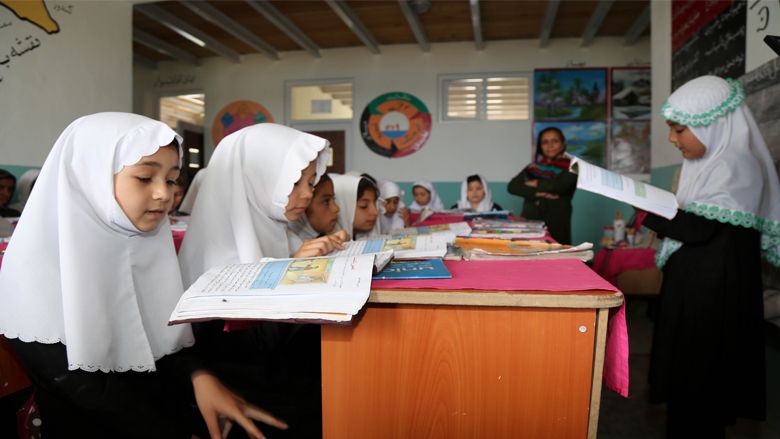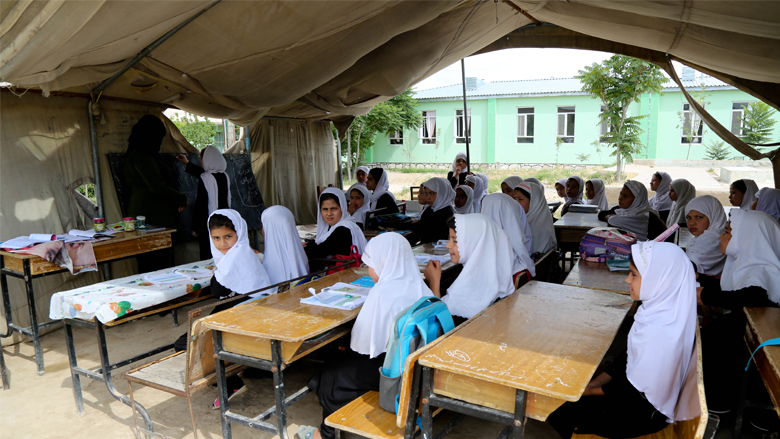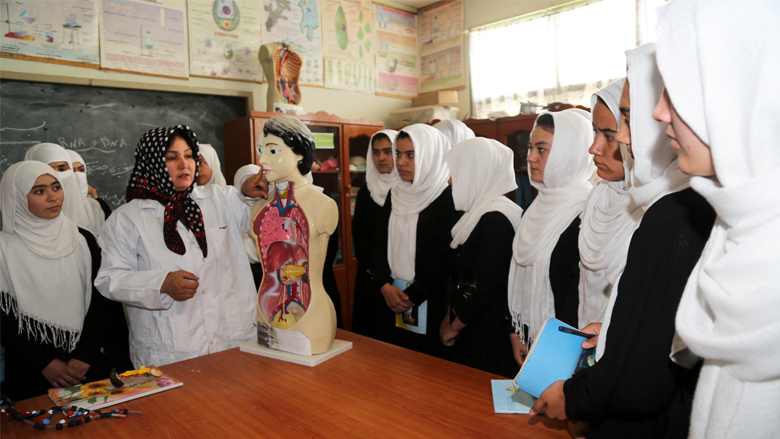MAZAR-E-SHARIF, Balkh Province – “Greeting carries a spiritual reward,” reads out 10-year-old Madina, who is reading the lesson of the day word by word before her classmates. She reads every word of the textbook in her hands with tremendous enthusiasm.
Madina has just entered third grade this year and is grateful to be in the new building that houses her classroom. “When our school did not have a building, we were studying inside tents, sometimes even under burning sunshine and rainfall,” she says.
A new building with eight classrooms was built recently on the campus of Khurasan high school, a girls’ school located in Kart-e-Khurasan in the city of Mazar-e-Sharif where Madina studies. As a result, hundreds of children have been transferred from tents to a properly equipped learning environment. Currently, some 3,900 girls study in Khurasan high school in morning and afternoon sessions.
Zarghona Harris, principal of Khurasan high school, is pleased that so many students no longer need to study in tents. “With the new building added to the school campus this year, 11 of our classes, which would have otherwise remained under the tents, have moved inside the building,” she says.
Another student who has moved into the new building, Yalda Haidary, recalls the uncomfortable schooldays before it was built. “When our class was under the tent, we had to keep our feet above the ground to avoid stepping on the water puddles that collected inside our tent on rainy days,” says 16-year-old Yalda. “Studying in a proper classroom has brought me peace of mind, something every student deserves to enjoy.”
The new building at Khurasan high school was made possible with the assistance of an Infrastructure Development Grant from the Second Education Quality Improvement Program (EQUIP II). The objective of EQUIP II is to increase equitable access to quality basic education, especially for girls, through school grants, teacher training, and strengthened institutional capacity with support from communities and private providers. It is implemented by the Ministry of Education and supported by the World Bank and Afghanistan Reconstruction Trust Fund (ARTF).
Khurasan high school was awarded an Infrastructure Development Grant of $98,000 for the new building. In addition, the School Management Council (shura), comprising parents and community members, made a contribution of nearly 10 percent of the costs to help in its building.



